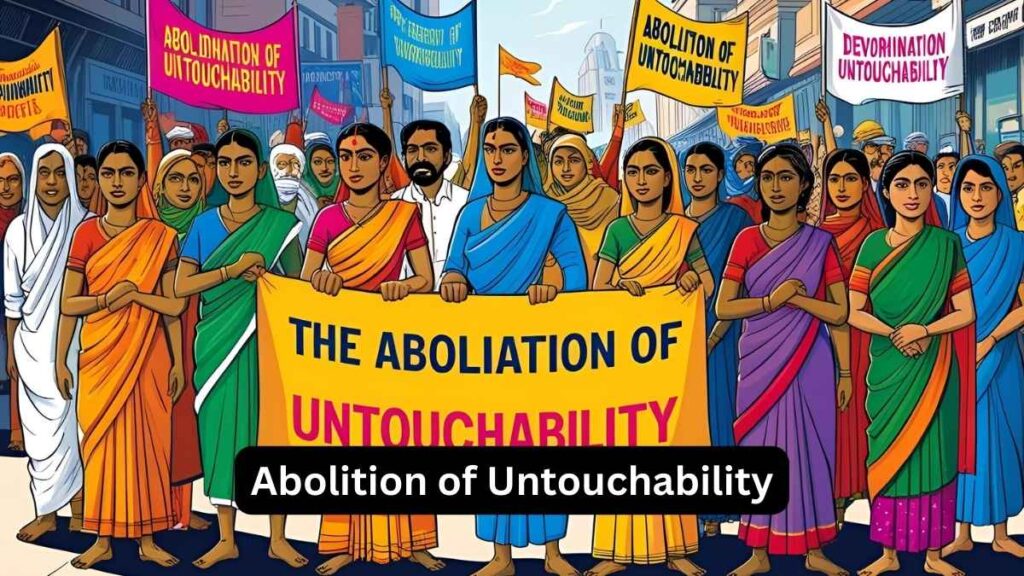Font size:
Print
Gender and Climate Change
Context: “This generation was supposed to do better,” says a woman from Dhanelikanhar, Chhattisgarh, reflecting on how climate change and migration are forcing girls to drop out of school.
More on News
- Despite 30 years since the Beijing Declaration and Platform for Action, significant gaps remain between policies and lived experiences of women in India.
- Laws like the Protection of Women from Domestic Violence Act and the POSH Act have been landmark steps, but implementation remains weak.
Why Climate and Gender Must Be Integrated?
- India’s Beijing+30 report offers limited insight into how gender inequality and climate change intersect—a significant oversight, especially given that both are among the most pressing global challenges.
- Climate change disproportionately impacts women, especially in rural India where resources, decision-making power, and resilience capacity are already unequal.
- Women face increased health risks from:
- Extreme heat and malnutrition
- Food insecurity and drought-related displacement
- Higher instances of hysterectomies, infertility, and menstrual health concerns
- Heat stress and extreme weather impact income, agriculture, and essential services — 33% of non-farm income is lost. Simultaneously, women shoulder an increasing burden of unpaid care work such as water and fuel collection.
Lack of Gender Focus in Climate Policy
- Most climate financing focuses on clean energy, green transport, and energy efficiency.
- According to the Food and Agriculture Organisation: Despite their vulnerability, women are largely invisible in climate discourse.
- Only 6% of climate policies mention women.
- Only 1% mention poverty and 6% refer to farmers.
- This is in stark contrast to the ground reality where women produce half of the world’s food, often through sustainable, traditional practices.
- Unpaid care work (water, fuel collection) increases under climate stress: According to a recent Arsht-Rock report, Indian women already work over eight hours daily, 71% of which is unpaid. By 2050, without targeted interventions, that figure could climb even higher.
Health and Safety: At Risk
- Climate-related stress also heightens health vulnerabilities. Over 50% of pregnant women in India are anaemic.
- Food insecurity increases the likelihood of anaemia by 1.6 times.
- Worse, climate change has been linked to rising intimate partner violence. For each 1°C increase in temperature, incidents of physical abuse rise by 8%, and sexual violence by 7.3%, making women not only victims of environmental injustice but also of escalating domestic abuse.
Women as Climate Adaptation Leaders
- Women are central to climate mitigation, especially in:
- Sustainable agriculture
- Preservation of traditional seeds
- Natural resource management
- Rural Indigenous women prioritise:
- Mahua (forest-based livelihoods)
- Mao (safety due to conflict over resources)
- Migration (and associated risks)
- Women collectives improve productivity, share labour, and respond first in disasters.
Gaps in the Beijing India Report (2024)
- The report lacks a strong climate-gender connection.
- There is a pressing need for:
- Gender-responsive climate action
- Gender-sensitive indicators and data
- Insights on gendered climate impact
Policy Recommendations
- Climate Budgeting: Must avoid greenwashing and tokenistic inclusion of women. Use gender-audited, gender-responsive climate budgets.
- Inclusive Decision-Making: Empower women in climate planning and leadership. Set up climate support hubs for health, migration, safety, and SRHR.
- Community-Led Action: Hold inclusive climate consultations. Promote women-led green energy initiatives and political leadership.
- Data & Research: Invest in climate-gender nexus data. Examine human-animal conflict through a gender lens.
- Close Agricultural Gender Gap: Could increase yields by 20–30%, feeding 100–150 million more people.
- Strengthen Disaster Response: Focus on vulnerable women, trafficking risks, and geriatric care.
- Livelihood Diversification: Promote non-farm employment, green skills, and women’s entrepreneurship.
Private Sector & Global Partnerships
- Green funds should support women-led innovations and gender-inclusive climate tech.
- The private sector can: Invest in resilience-focused projects. Ensure access to climate-resilient services and technologies.
- Cross-sector collaboration (government, civil society, research institutions, private sector, international organisations) is vital: Promote knowledge sharing, community engagement, capacity exchange, and collective advocacy.


